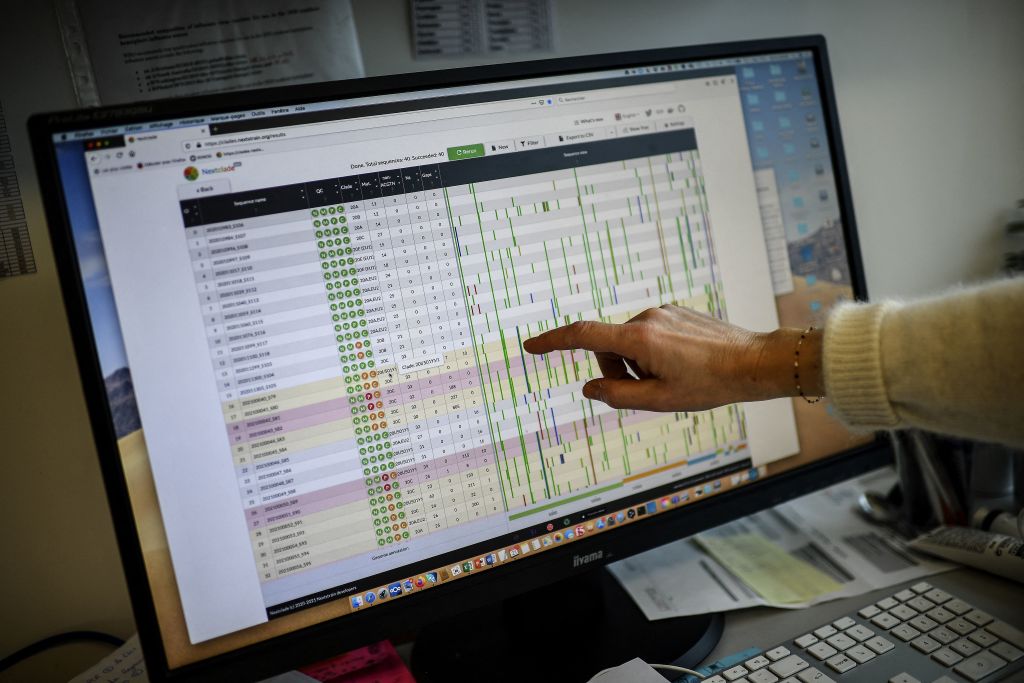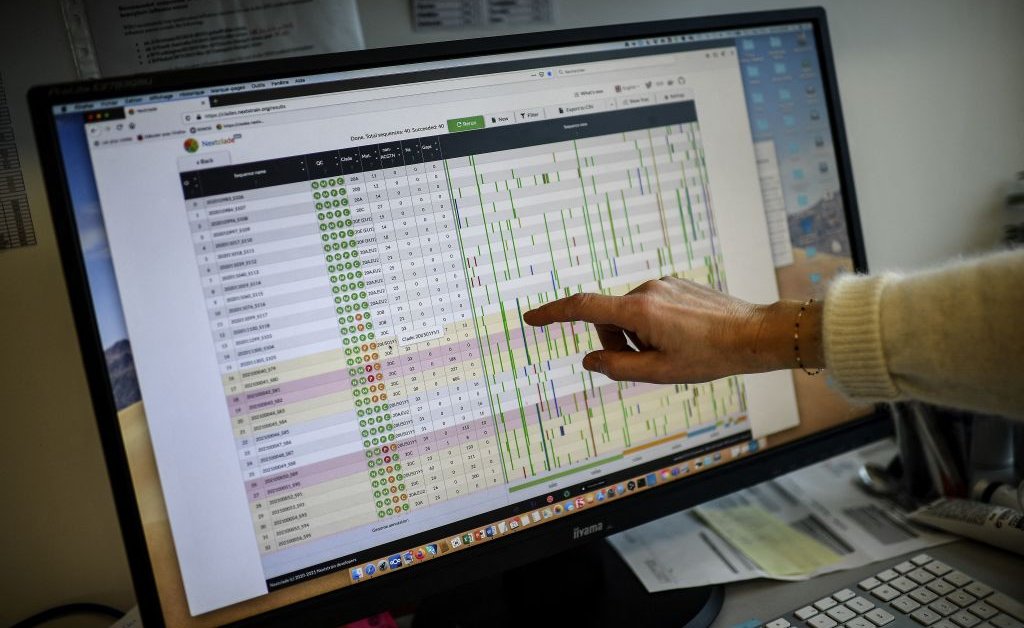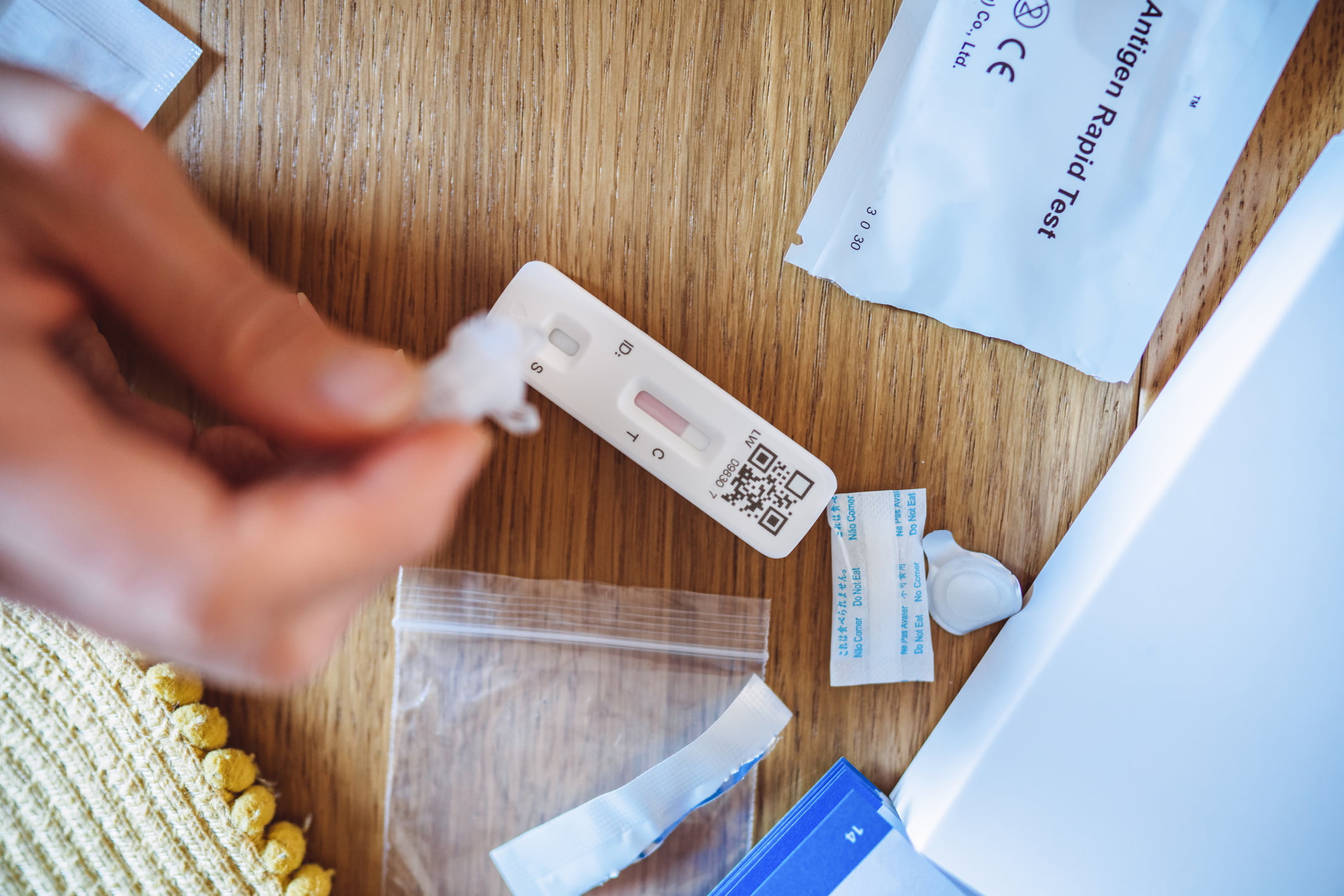What to Know About BA.2, a New Omicron Variant – As coronavirus case numbers in the U.S. show early signs of tapering, scientists are keeping a watchful eye on a newly identified version of the omicron variant, nicknamed “stealth omicron,” that is driving new outbreaks in parts of Europe.
The culprit is a “subvariant” of the omicron variant, which means it’s closely related to omicron but has some different mutations. Known officially as BA.2, the subtype has small variations that set it apart from the original omicron strain but not enough for it to be considered an entirely new lineage.
“You could say they’re like brothers in the same family,” said infectious diseases expert Cameron Wolfe, an associate professor of medicine at the Duke University School of Medicine. “There are some subtle differences, but most of the genetics are the same in both.”
Researchers are trying to learn as much as they can about BA.2; here’s what’s known about it so far.
Why is it known as ‘stealth’ omicron?
Unlike what its nickname might suggest, the BA.2 subtype isn’t known as “stealth” omicron because it’s difficult to find.
The nickname comes from a shortcut that helped researchers quickly identify omicron in PCR tests.
Because of a quirk in omicron’s genetic sequence, PCR test results looked different from typical positive tests, essentially providing researchers with an easy way to spot the variant without sequencing the samples. (PCR tests generally aren’t used to determine what variant people have, only whether they are infected with the coronavirus.)
One of BA.2’s mutations got rid of the genetic quirk, meaning that shortcut is no longer available.
“So now when you get a readout for BA.2, it says: Yes, Covid is here, but we don’t know what type it is,” Wolfe said.
With omicron now accounting for more than 99 percent of new reported Covid-19 cases in the U.S., the distinction isn’t a huge issue, Wolfe said, and it doesn’t affect how infections are dealt with in clinical settings.
It was more important last month, as omicron was gaining steam in relation to the delta variant, because monoclonal antibodies were found to be less effective to treat omicron, he added.
“It was useful then to know if the person in front of me had delta and I could use monoclonal antibodies or if they had omicron and I shouldn’t,” Wolfe said.
What is different about BA.2?
The BA.2 subvariant most likely evolved as omicron circulated widely around the world. As a virus spreads and replicates, it naturally picks up random mutations that can change how it behaves, such as how contagious it is or how severely it can make people ill — although many mutations won’t change how the virus affects humans.
It’s too soon to know for sure, but there are concerns that the specific mutations identified with the BA.2 subtype could make it more contagious or better able to evade vaccines — two factors that had already enabled the omicron variant to spread so pervasively around the globe.
The original omicron strain, known as BA.1, featured around 50 genetic mutations that separated it from the original strain of the coronavirus. Thirty-six of the mutations were to the virus’s spike proteins, which cover the outside of the virus and are the main targets of vaccines and treatments like monoclonal antibodies.
A study published in the Journal of Medical Virology on Dec. 29 found that the BA.2 subtype has 28 mutations in its spike proteins, several of them different from the original omicron strain.
The World Health Organization hasn’t yet classified BA.2 as a “variant of concern,” but it said its characteristics, “including immune escape properties and virulence, should be prioritized independently.”
That type of rapid growth could indicate that BA.2 is more contagious than the original omicron strain, but more research is needed.
Scientists in Denmark found the proportion of BA.2 cases rising across the country, including in regions where the original omicron strain was dominant. That seems to indicate that the new outbreaks aren’t just an anomaly, said Dr. Stuart Ray, a professor of medicine at Johns Hopkins University.
“That suggests that maybe BA.2 is displacing BA.1, like it’s really competing,” he said.
But Ray said much remains unknown about the situation in Denmark and whether BA.2 could cause a similar increase in cases in the U.S.
Does it cause a more severe illness?
So far, there is no evidence to suggest that the subvariant causes more severe illness or symptoms, but it may be too soon to tell.
Danish health officials said in a news briefing Wednesday that while the BA.2 subtype seems more contagious, there are no indications that it has an impact on hospitalizations or deaths.
Still, hospitalizations and deaths from Covid-19 tend to lag behind infections.
“Severity takes some time to figure out, and it’s often murky,” Wolfe said. “When these things crop up again, they tend to affect younger, more mobile parts of the population first that might not end up in hospitals anyway because they’re otherwise fit and health.”
Are vaccines effective against the subvariant?
More research is needed, but early reports show that vaccines are roughly as effective against BA.2 as they are against the original strain of omicron.
While omicron’s mutations allowed it to better evade protective antibodies generated by vaccines and natural immunity, the vaccines and the booster shots protected the vast majority of people from becoming seriously ill.
And while the omicron variant caused less severe disease overall, the sheer number of infections during this wave is still placing a huge burden on hospitals across the country.
Dr. Dale Bratzler, the chair of the Department of Health Administration and Policy at the University of Oklahoma’s Hudson College of Public Health, said it’s reasonable to think the vaccines will hold up similarly well with the BA.2 subvariant. But he added that certain parts of the population will be more vulnerable than others, as has been the case throughout the pandemic.
“The people we always worry about are high-risk individuals above age 65, people who are immunosuppressed or have pre-existing conditions that could lead to severe complications from Covid,” he said.
He said it remains as important as ever to continue promoting vaccination efforts and to keep wearing masks to protect vulnerable people in the community.
Where has BA.2 been detected?
The omicron subvariant has been identified in several countries, including Denmark, the United Kingdom, Norway, India, the Philippines and South Africa.
In the U.S., BA.2 accounts for an extremely low percentage of newly reported cases, but it has already been detected in California, Washington, New York, Texas, Utah, New Mexico and other states.
Is it more contagious?
Preliminary research in Denmark, where cases involving BA.2 are rising, suggest that the subvariant may be more contagious than the original omicron strain, which was already the most transmissible known variant to date.
The BA.2 subtype accounted for 20 percent of Denmark’s Covid-19 cases at the end of December, and it jumped to 45 percent of reported cases by the second week of January. Danish Health Minister Magnus Heunicke said this week that the BA.2 subvariant is now dominant in the country.









